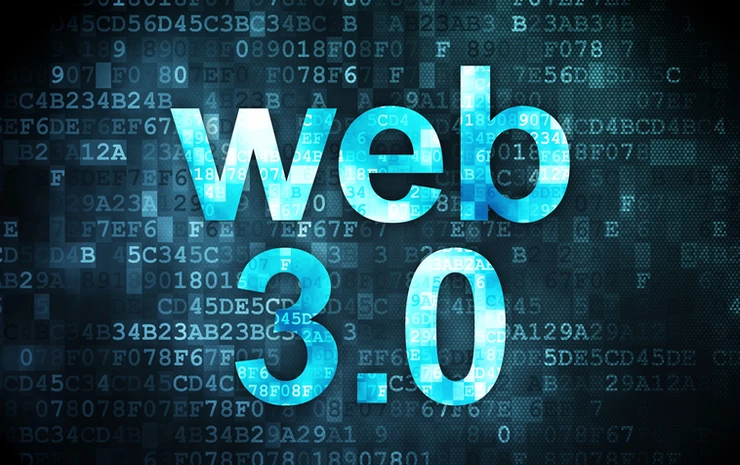Web 3.0 is seen as the next evolution of the internet. It aims to change our current web and make it more decentralized, open, and trustless, giving the control over content and audience back to users.
After the fast growth in adoption of decentralised finance, then NFT applications, Web 3.0 is emerging as one of the next growth areas in the blockchain space, along with blockchain-based gaming and the metaverse. Web 3.0 seeks to improve on Web 2.0 in a number of ways. Below we describe the challenges and the emerging solutions.
Evolution of the Web
Web 1.0 generally refers to the internet from the 1990s to the early 2000s. In Web 1.0, the information and content flow was primarily one-way. Websites provided information that users could consume with little to no user interaction. This changed in the early 2000s with the emergence of social media platforms such as Facebook and the increasing popularity of blogs where users became more than simply consumers of information but also creators of their own content. This two-way interaction between users and the internet is referred to as Web 2.0, or the Social Web – this is the current version of the web we use.
Shortcomings of Web 2.0
While Web 2.0 is interactive, with users creating their own content and sharing it with their follower base, it has several limitations which Web 3.0 tries to solve. Most of the issues of Web 2.0 arise from centralization and closed ecosystems. The Social Web is dominated by a handful of large, centralized corporations that control the access to platforms and own and use the data they capture. The key improvements Web 3.0 applications are seeking to bring are listed below.
Ownership
While users create content on web platforms such as social media, or store data on cloud services, they are heavily dependent on the platform providers. This brings several shortcomings as centralized entities can arbitrarily close accounts, block certain content or misuse user data. In Web 3.0 a user is the owner of their data and can decide how it is being used e.g., be renumerated if their data are used for commercial purposes.
Openness
In the spirit of public blockchains, Web 3.0 applications are characterized by openness. The applications’ code is open-source and publicly accessible. Users can verify if a protocol does what it claims, and they can copy, modify, and improve protocols – just as we already have seen in the DeFi space. This brings a level of transparency and innovation that is not possible in the current web, characterized by closed systems and private algorithms.
Interoperability
In Web 2.0, users’ data and audience are usually bonded to the platform and it is hard, or even impossible, to migrate them from one platform to another. Having a large audience on YouTube does not translate into having a similarly large audience on Instagram for example for an influencer or company. Content providers must build up each audience separately. Due to the open and interoperable nature of Web 3.0, content creators and companies can move their audience/customers from platform to platform.
Reliability
Just recently Facebook, WhatsApp, and Instagram suffered a massive global outage. As Web 3.0 applications run on decentralized networks, they have no down time and kill switch – if one node (server) goes down, there are multiple others to fill the void and keep the application running. This infrastructure makes Web 3.0 applications more scecure and reliable than their current centralized counterparts.
Closing Thoughts
Web 3.0 brings the promise of further opening and democratizing the internet. If successful, this new decentralized web will offer users more control over their data, a far greater transparency into the protocols of the applications, as well as greater reliability and security. In our next blog post we will introduce some of the promising projects in the Web 3.0 space.
Disclaimer
This document is purely for educational purposes and has been issued by Sygnum Group. It is not intended for distribution, publication, or use in any jurisdiction where such distribution, publication, or use would be unlawful, nor is it aimed at any person or entity to whom it would be unlawful to address such a marketing communication. It does not constitute an offer or a recommendation to subscribe, purchase, sell or hold any security or financial instrument. It contains the opinions of Sygnum Group, as at the date of issue. These opinions and the information contained herein do not take into account an individual‘s specific circumstances, objectives, or needs. No representation is made that any investment or strategy is suitable or appropriate to individual circumstances or that any investment or strategy constitutes personalized investment advice to any investor. Therefore, you must verify the above and all other information provided in the document or otherwise review it with your external advisors. Some investment products and services, including custody, may be subject to legal restrictions or may not be available worldwide on an unrestricted basis. The information and analysis contained herein are based on sources considered as reliable. Sygnum Group uses its best efforts to ensure the timeliness, accuracy, and comprehensiveness of the information contained in this document. Nevertheless, all information indicated herein may change without notice.
Sign up for Future Finance
Join our 40,000 strong global community to future proof your investments. Sign up now to be the first to receive our news, product launches, industry reports and educational series.
